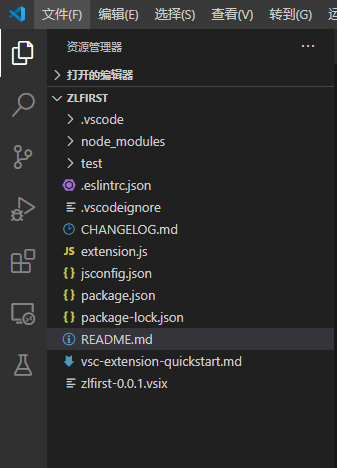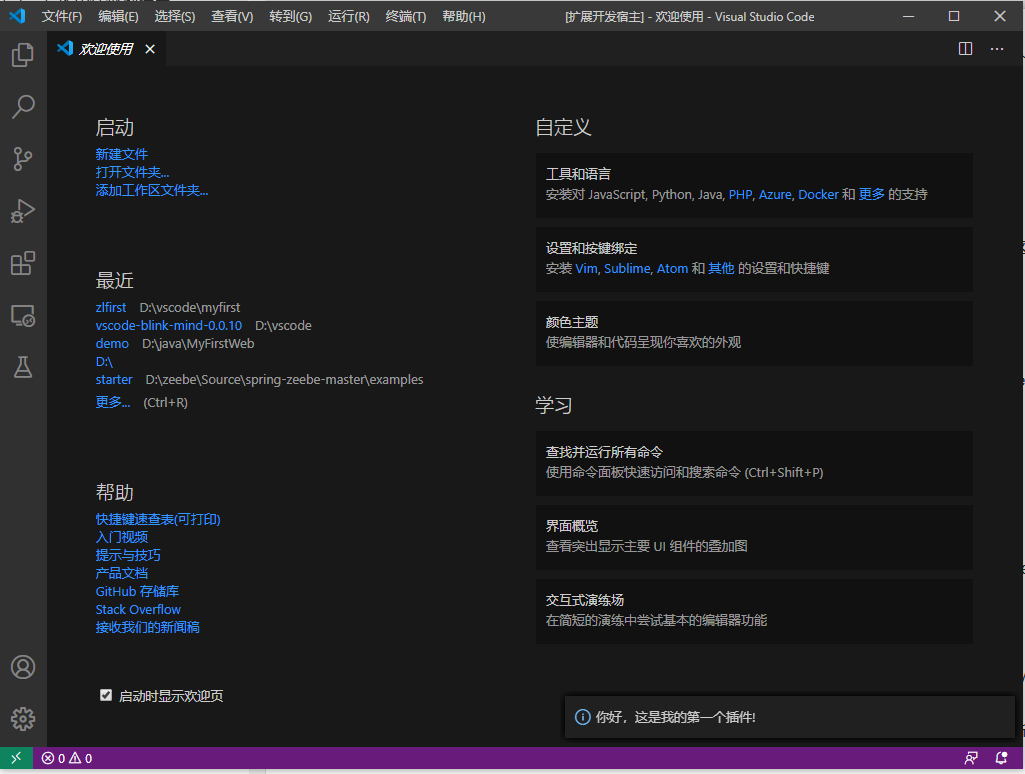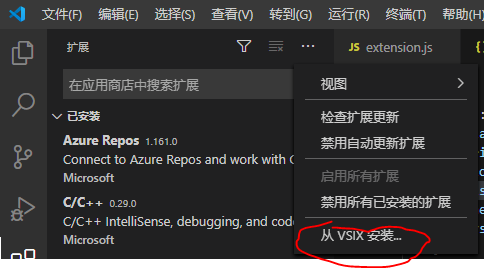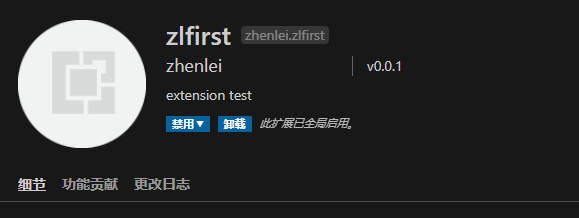如何创建VS Code 扩展插件
目录
- 创建插件开发模板
- 插件运行和调试
- 插件打包
- 扩展插件的安装和卸载
- 创建第一个实用插件
VS Code提供了强大的扩展功能,我们可以通过开发插件实现自己的业务模型编辑器。这里我们快速介绍一下插件的创建、开发和发布过程。
创建插件开发模板
首先需要确认系统中安装了node.js,并且可以使用npm安装程序包。然后,安装插件的开发模板生成器:
npm install -g yo generator-code
安装完成后,使用模板创建第一个扩展项目,我们为这个项目创建一个子目录,然后进入命令行,在这个子目录下执行:
yo code
模板生成程序运行:

生成完成后,在命令行运行:
code .
这个项目在vs code 中打开了:

插件运行和调试
我们打开extension.js文件,可以看到插件启动的代码,我们对代码进行一点修改:

将里面的提示修改为我们需要的信息。然后按F5运行。这时,一个新的Vs Code界面启动了,在这个新界面中按Ctrl+Shift+P,打开命令窗口,输入hello world,在界面下方出现我们编辑的信息:

说明这个插件已经可以运行了。
插件打包
现在我们看如何将这个插件打包,在其它机器上安装使用。Vs Code的插件可以同时创建vsix文件发布,也可以发布到应用商店,通过插件管理器进行安装。我们这里只介绍第一种方式。
首先需要安装插件打包工具vsce:
npm i vsce -g
然后,我们还需要在package.json中增加publisher的信息:
"publisher": "zhenlei",
如果不增加这个信息,会出现如下错误:

然后还要修改打包工具创建的Readme.md文件,如果不修改,会出现如下错误:

现在我们可以打包了,在命令行中,进入项目文件夹,运行:
vsce package
这时会提问,缺少respository,这是一个警告,我们可以忽略,继续执行,安装包就创建完成了:

扩展插件的安装和卸载
可以在vs code的扩展管理器中安装打包好的扩展插件,选择从VSIX安装:

也可以在扩展管理器中禁用或卸载安装好的插件:

创建第一个实用插件
现在我们创建一个实用的插件,这个插件使用XLST模板将XML文件转换为另一种格式。转换功能使用开源的组件xslt-processor完成,插件本身功能很简单:打开xlst文件,转换当前的xml,将结果显示在新的窗口。
首先使用模板创建项目:
yo code
输入这个项目的名字zlxslt,这个项目我们使用yarn作为包管理器。项目创建完成后,使用
code .
在VS Code中打开项目。
现在需要引入xslt-processor,在终端中输入:
yarn add xslt-processor
这个命令会在项目中安装xslt-processor并更新项目中的package.json和yarn.lock。
在src目录中增加文件schema.d.ts,增加声明语句:
declare module 'xslt-processor';
修改package.json,去掉缺省创建的命令,增加新的命令:
"activationEvents": [ "onCommand:zlxslt.runMyXSLT" ],
修改extension.ts:
// The module 'vscode' contains the VS Code extensibility API
// Import the module and reference it with the alias vscode in your code below
import * as vscode from 'vscode';
import * as fs from 'fs';
import { xmlParse, xsltProcess } from 'xslt-processor';
// this method is called when your extension is activated
// your extension is activated the very first time the command is executed
export function activate(context: vscode.ExtensionContext) {
// Use the console to output diagnostic information (console.log) and errors (console.error)
// This line of code will only be executed once when your extension is activated
console.log('Congratulations, your extension "zlxslt" is now active!');
const mydisposable: vscode.Disposable = vscode.commands.registerCommand('zlxslt.runMyXSLT', async (): Promise<any> => {
const xsltFile = await vscode.window.showOpenDialog(
{
canSelectFiles: true,
canSelectFolders: false,
canSelectMany: false,
filters: {
'XSLT' : ['xsl','xslt']
}
}
);
if(vscode.window.activeTextEditor !== undefined && xsltFile !== undefined) {
const xml: string = vscode.window.activeTextEditor.document.getText();
const xslt: string = fs.readFileSync(xsltFile[0].fsPath).toString();
try {
const rXml = xmlParse(xml);
const rXslt = xmlParse(xslt);
const result = xsltProcess(rXml, rXslt);
const textDoc = await vscode.workspace.openTextDocument(
{
content: result,
language: 'xml'
}
);
vscode.window.showTextDocument(textDoc, vscode.ViewColumn.Beside);
}
catch(e) {
vscode.window.showErrorMessage(e);
}
}
else {
vscode.window.showErrorMessage('An error occurred while accessing the XML and/or XSLT source files. Please be sure the active window is XML, and you have selected an appropriate XSLT file.');
}
});
context.subscriptions.push(mydisposable);
}
// this method is called when your extension is deactivated
export function deactivate() {}
启动调试,会打开新的窗口,打开一个xml文件,然后按Ctrl+Shift+p打开命令窗口,选择“Run My XSLT”,这时会弹出文件选择窗口,选择xslt文件,转换后的xml会显示在旁边的窗口。
到此这篇关于如何创建VS Code 扩展插件的文章就介绍到这了,更多相关VS Code创建扩展插件内容请搜索我们以前的文章或继续浏览下面的相关文章希望大家以后多多支持我们!

